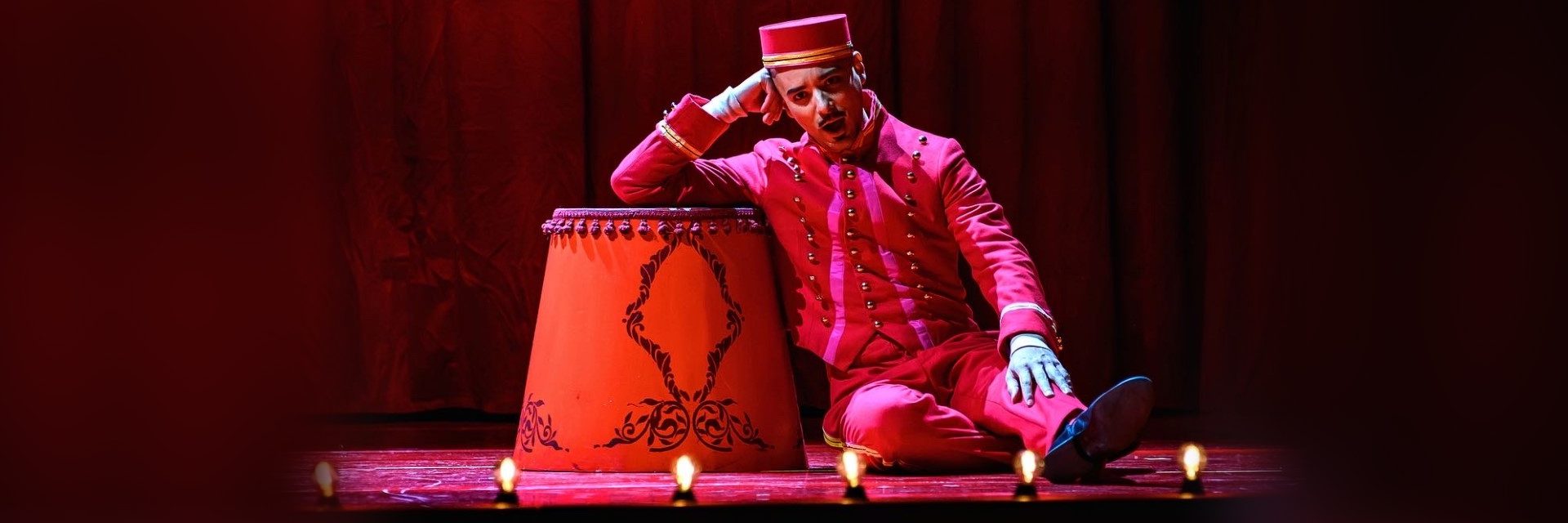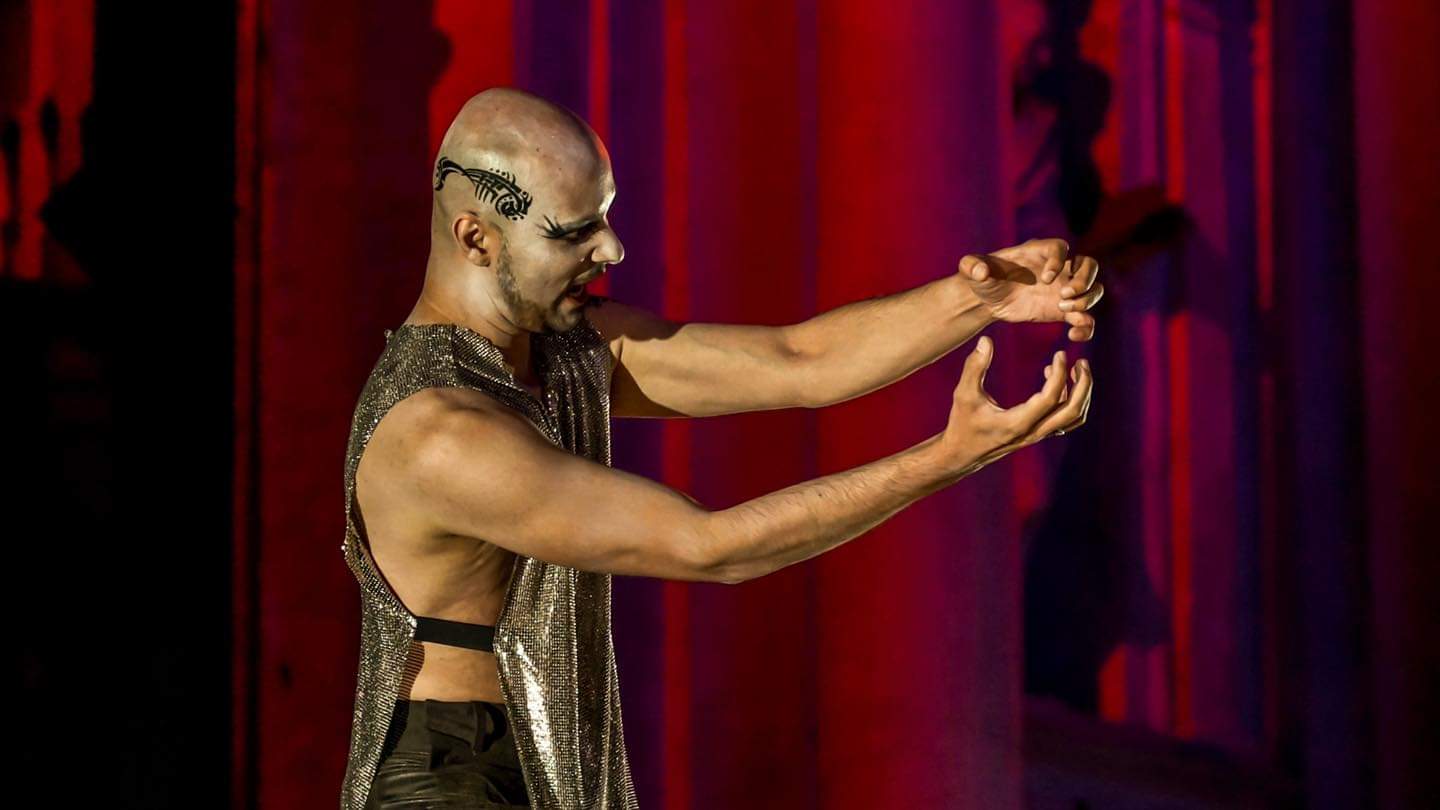(October 26, 2024) The global astrology market, valued at $12.8 billion in 2021, is projected to reach $22.8 billion by 2031, growing at a CAGR of 5.7% from 2022 to 2031, according to Allied Market Research. Meanwhile, a joint report by FICCI and Ernst & Young forecasts the Indian astrology market to reach ₹50,000 crores (USD 6.5 billion) by 2025.
As a visionary at the intersection of technology and astrology, with over two decades of experience in the IT industry, Punit Pandey recognized the potential in this market early on. During his career as an IT professional in the US, he worked for an IT firm with major clients like Boeing and the US Army. Eventually, he decided to fully commit to his passion for entrepreneurship and astrology, and hence made the decision to return to India to focus on expanding his technology-based astrology platform, which until then had just been a hobby.
AstroSage, a leading digital astrology platform and Punit Pandey’s brainchild, has taken astrology beyond borders. “With more than one million daily active users, 50 million downloads, and over half a million astrologers, AstroSage is reaching a threshold few Indian tech products have achieved. Unlike many apps that rely on cash burn, our growth has been organic – driven by word of mouth. People love AstroSage because it provides real value, similar to how WhatsApp and Instagram grew through recommendations,” Punit shared with Global Indian, adding “This is just the beginning. With AI at our platform’s core, we’re shaping the future of astrology, bringing it closer to millions worldwide.”

Punit during his days in the U.S.
Vedic astrology – India’s spiritual soft power
Astrology in India, known as ‘Vedic astrology’ or ‘Jyotish,’ is part of the country’s ancient Vedic sciences, rooted in the sacred texts of Hinduism. It is based on the belief that celestial positions influence human affairs and natural events.
Globally, Vedic astrology has become a significant part of India’s soft power, alongside practices like yoga and Ayurveda. It has contributed to the worldwide fascination with Indian traditions, spirituality, and wellness practices. Astrotech platforms are amplifying the reach of this ancient science by integrating it with modern technology, showcasing India’s ability to blend tradition with innovation.
Merging Vedic science with AI
The Founder and Chief Innovation Officer of AstroSage, Punit has introduced services like AstroSage Cloud, the first cloud-based solution for astrology, and AI-powered Astrology Avatars.
Established in 2011, his cloud platform connects astrologers in even the smallest towns with clients on the other side of the world, opening doors to opportunities that were once unimaginable. “Today, we have users in several countries,” says Punit, whose astrotech startup is widely recognized for revolutionizing astrology through AI and digital transformation.
“Companies like OpenAI, creators of ChatGPT, developed Large Language Models (LLMs) primarily trained on past data, which struggle with calculations,” he remarks. Punit’s challenge was to create models that not only foresee the future but also perform calculations and interpret them as a human astrologer would – a feat he successfully scaled.
From hobby to full-fledged venture
For Punit Pandey, AstroSage began as a hobby – a project driven by his curiosity about what he could achieve in India’s traditional Vedic sciences with the help of technology. This led him to create the Mobile Kundli app in 2001. “At that time, mobile apps were a far-off concept for most people in India. To put it in context, the iPhone wasn’t launched until 2007, and the App Store came in 2009. Yet, here we were, launching India’s first consumer mobile app in 2001, followed by the first cloud-based solution in 2003,” he remarks.
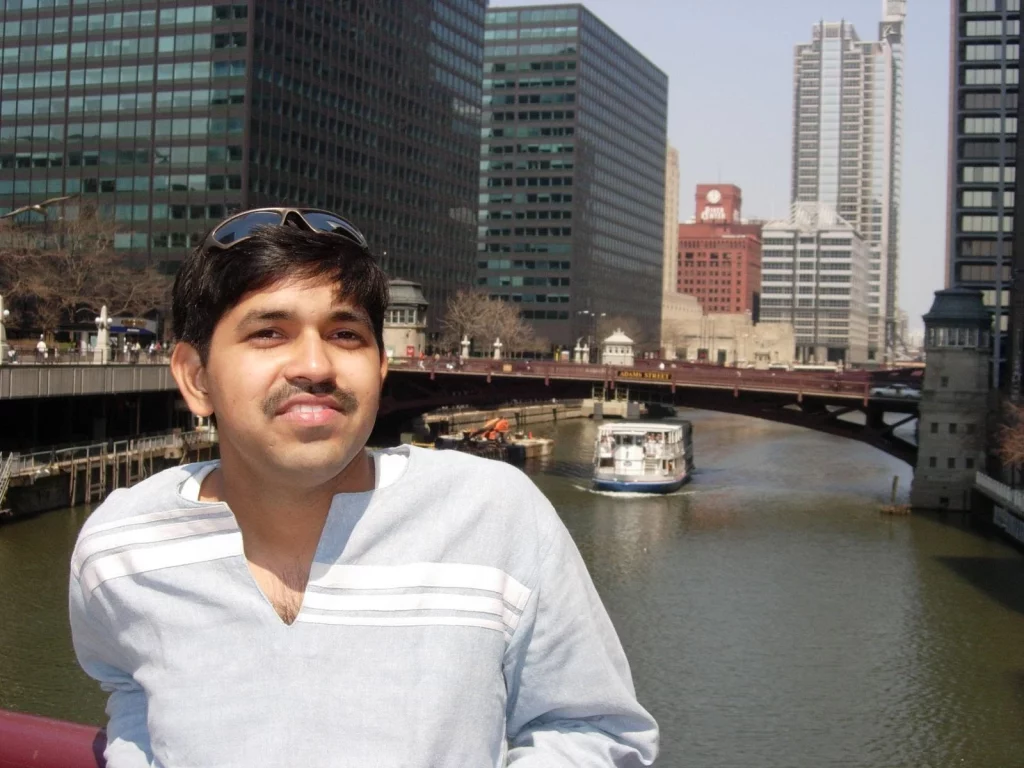
Punit during his days in the U.S.
In 2002-2003, as cloud technology and SaaS began emerging, he envisioned a cloud solution for astrology. He was working in the U.S. at that time. “No one in India was thinking about cloud software back then, especially not in astrology,” says the astrotech entrepreneur, who wanted a solution that didn’t require installation on each machine – something accessible anywhere, anytime, where updates could be rolled out instantly.
“I uploaded the solution to the astrosage.com domain. A few weeks later, I checked Google Analytics and was amazed to see the traffic surging. That’s when I realized I had created something viral,” he recounts talking about the days when he delved into astrology and astrotech as a hobby.
Around this time, Google launched AdSense, allowing websites to generate revenue. Soon, he was earning enough to sustain himself without a day job. “I had always dreamt of creating a global product from India, and AstroSage gave me that chance. So, I chose to follow my dream and return to India to build something transformative,” remarks the entrepreneur, who is also the founder of Ojas VR Studios, a company that has produced several virtual reality games.
As an early starter, he launched the first AI astrology app, Bhrigoo.ai, in 2017. “I believe my knack for spotting emerging tech trends and turning them into products set us apart. We were early movers, and our perseverance and focus on innovation allowed these products to succeed.”
Interest in astrology since childhood
Although Punit Pandey pursued a stable career in the IT sector after completion of his studies from the Agra University, his journey with astrology began much earlier. Around the age of 10 or 12, he stumbled upon some astrology books at a small bookshop while growing up in UP’s Auraiya. With a natural aptitude for mathematics, he found astrology surprisingly easy to grasp. The more he learned, the more he felt that astrology could hold the key to making the world a happier, more prosperous place.
“I’m certainly not the first to believe this – Indian sages recognized it thousands of years ago, which is why Jyotish is one of the six Vedangas, or limbs of the Vedas. Being part of the lineage of Sage Bhrigu, the author of the Bhrigu Samhita, it feels like destiny led me to this path,” he remarks.
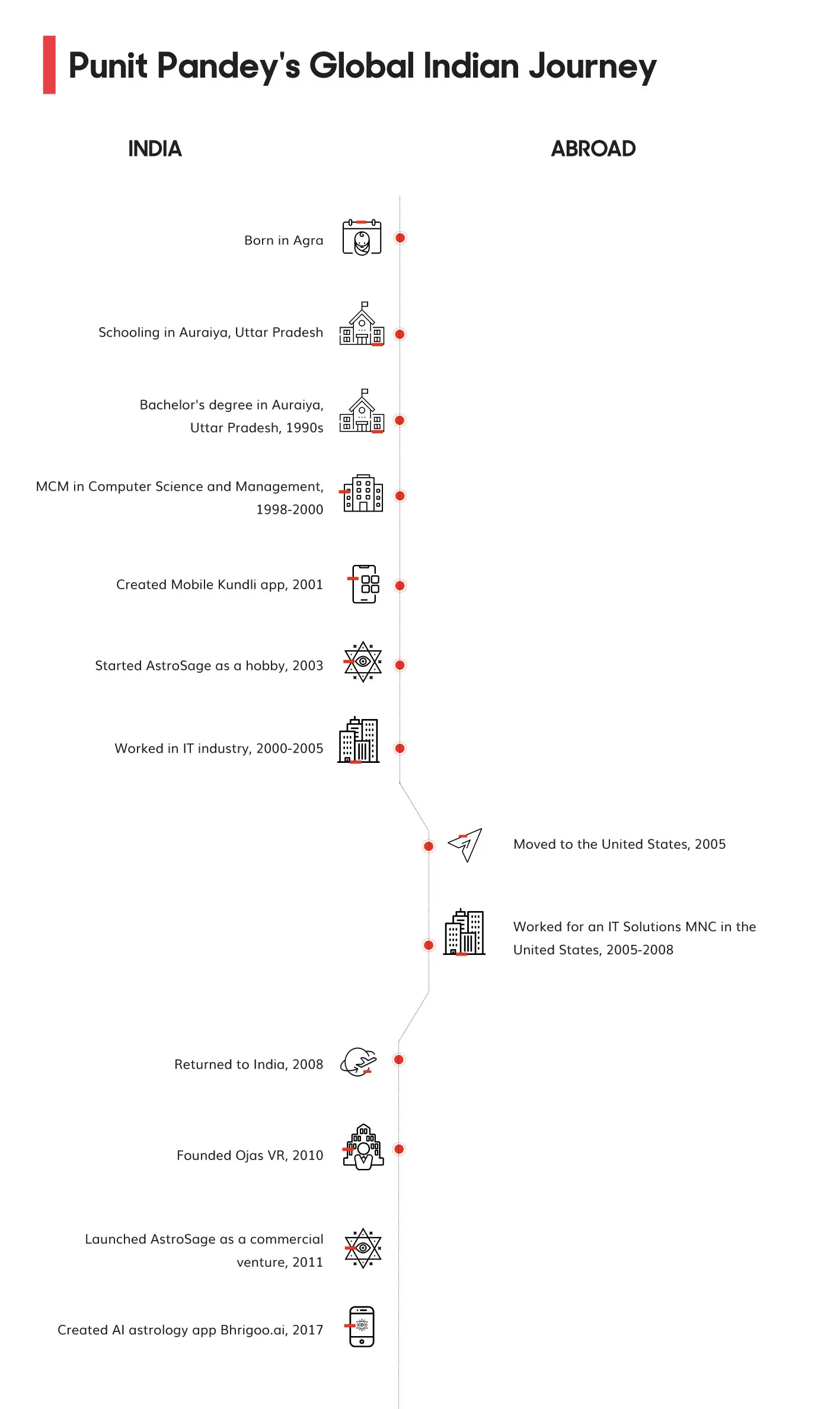
Embracing regional languages to scale technology’s reach
It’s all been part of a continuous journey. He launched the Mobile Kundli app in Hindi back in 2001 – a time when ‘vernacular’ wasn’t even a buzzword. No one had created a Hindi app before, and Palm OS, the operating system he used, didn’t even support Hindi, so he developed custom fonts to make it work. “Today, we’re proud to offer our services in more than 10 Indian languages, both on web and mobile,” he shares.
But it isn’t just about the Mobile Kundli app. The initial AstroSage Cloud version that he was toying with as a hobby was also multilingual. From the beginning, Punit understood that reaching the masses meant embracing regional languages.
The next frontier – AGI for deeply personal insights
Artificial General Intelligence (AGI) is an advanced concept of AI aimed to mimic human cognitive abilities. Unlike current AI, which is limited to specific tasks, AGI would have the versatility to understand, learn, and perform a wide range of activities across various domains autonomously. It aims to achieve general, human-like intelligence, allowing it to adapt and solve complex problems independently. While AGI remains a future goal, Puneet, always an early starter, is keen on adapting this technology to further enhance his platform’s capabilities. “It would be a step towards understanding not only the stars but also an individual’s life story. Imagine an astrologer who truly knows you, grows with you, and understands your unique context and experiences!”
“It would be like having a wise companion always by your side. It would bring empathy, intuition, and intelligence into astrology, transforming it from static predictions into a dynamic, evolving relationship,” he explains.
Looking ahead – From AstroSage Cloud to AstroSage AI
“With AstroSage Cloud, we reached 50 million downloads; with AstroSage AI, we aim to reach 500 million downloads—something no Indian app has achieved organically. If we succeed, our only rivals will be the giants like YouTube and Instagram. We are on the verge of creating the first true global tech product from India, and the journey has just begun,” he signs off.

With ambitious goals and expanding user bases, astrotech is emerging as a unique segment in India’s tech landscape, led by entrepreneurs like Punit Pandey. As platforms like AstroSage harness AI, cloud computing, and mobile connectivity, they’re transforming traditional astrology into a modern and scalable service accessible to users worldwide. This sector’s rapid growth signals a new era where technology enables personal insights and guidance, making astrology a digital-first, accessible experience, regardless of where a person is in the world.
- Follow Punit Pandey on LinkedIn


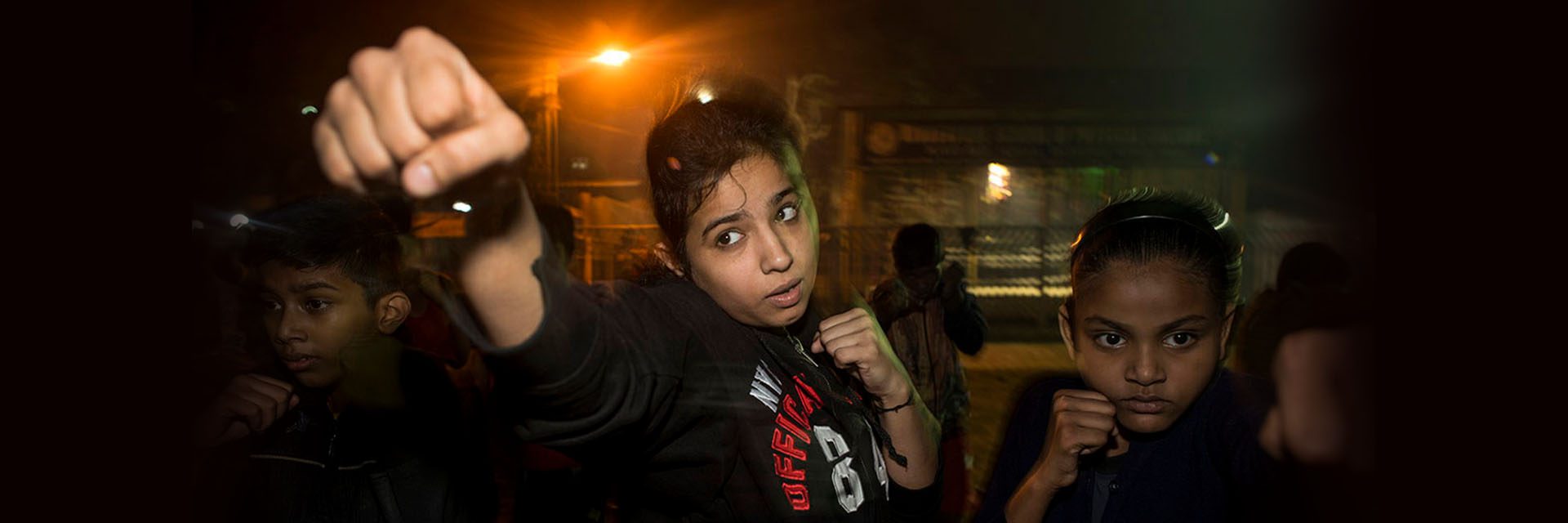
 Razia Shabnam exercises at her rooftop; Photo Courtesy: Arindam Mukherjee[/caption]
Razia Shabnam exercises at her rooftop; Photo Courtesy: Arindam Mukherjee[/caption] Photo Courtesy: Arindam Mukherjee[/caption]
Photo Courtesy: Arindam Mukherjee[/caption]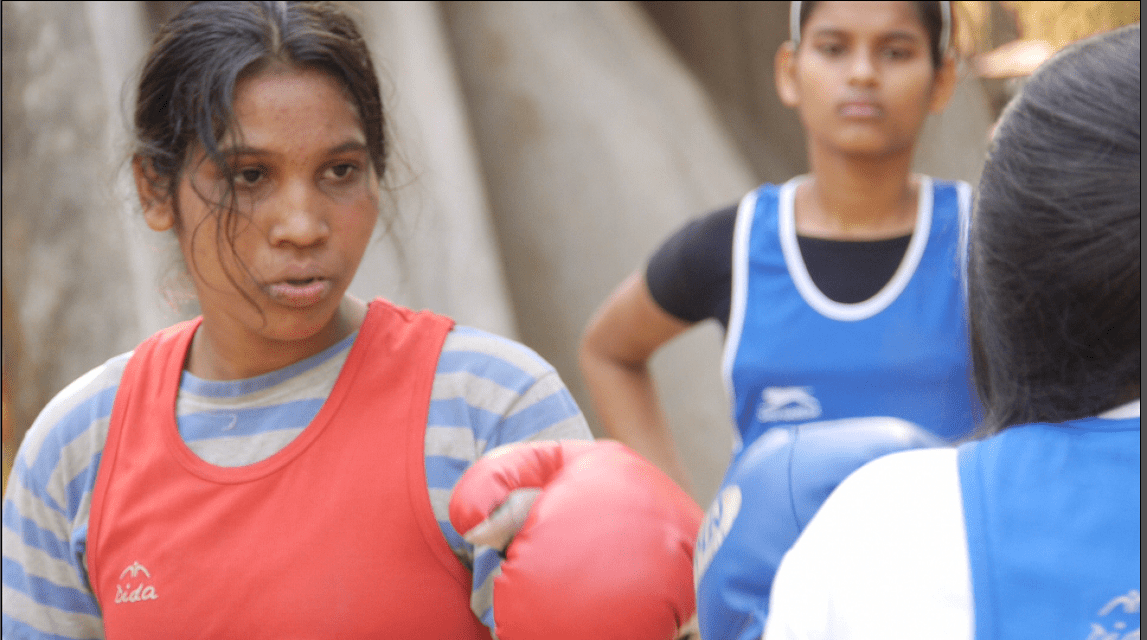 Ajmira Khatun during a practise session; Photo Courtesy: Alka Raghuram[/caption]
Ajmira Khatun during a practise session; Photo Courtesy: Alka Raghuram[/caption]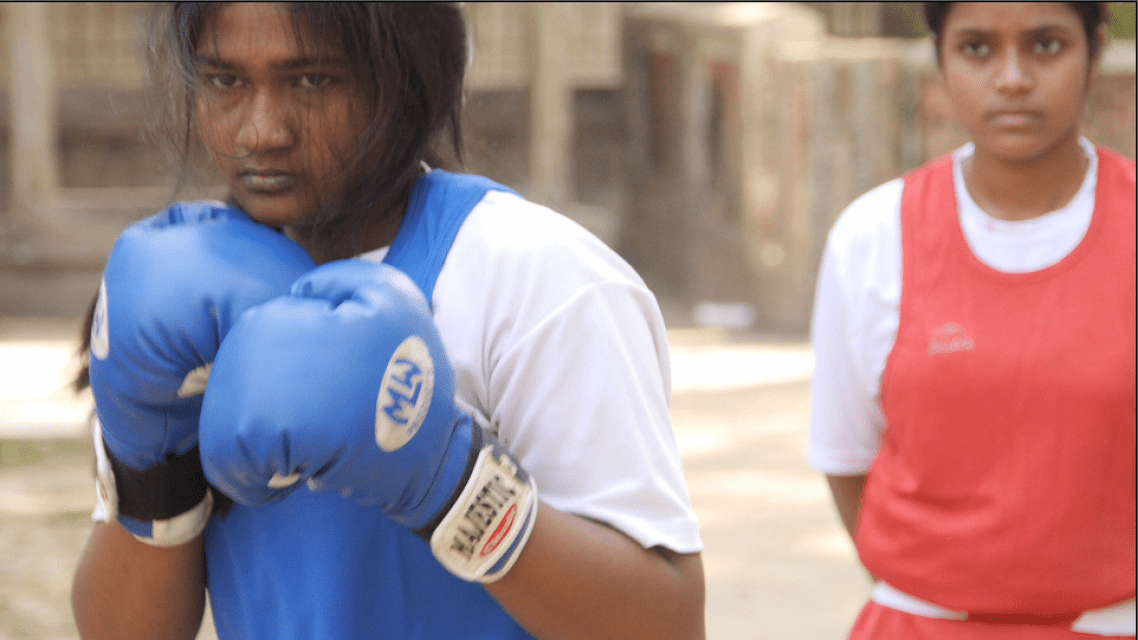 Taslima during a practise session; Photo Courtesy: Alka Raghuram[/caption]
Taslima during a practise session; Photo Courtesy: Alka Raghuram[/caption]

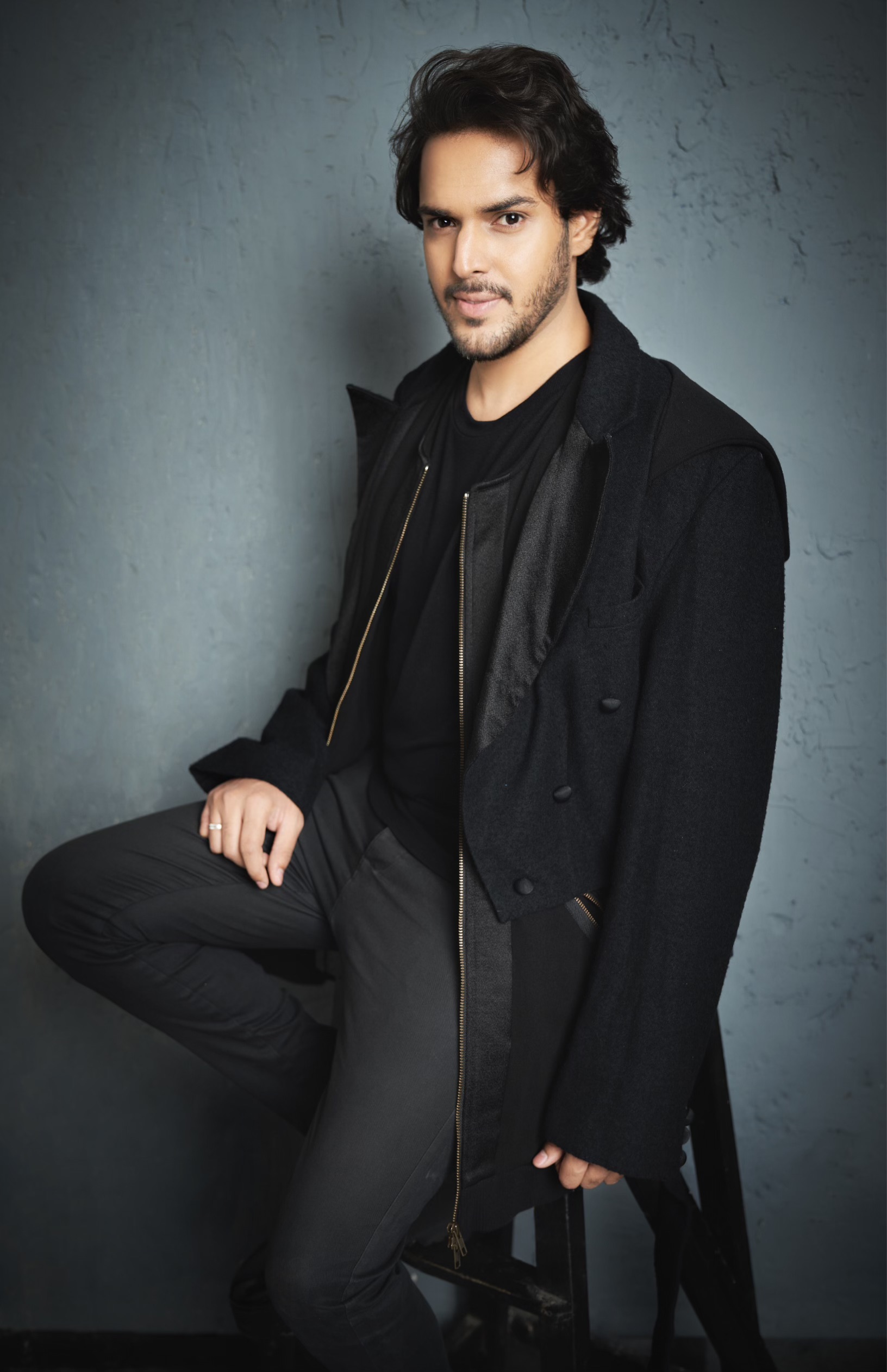
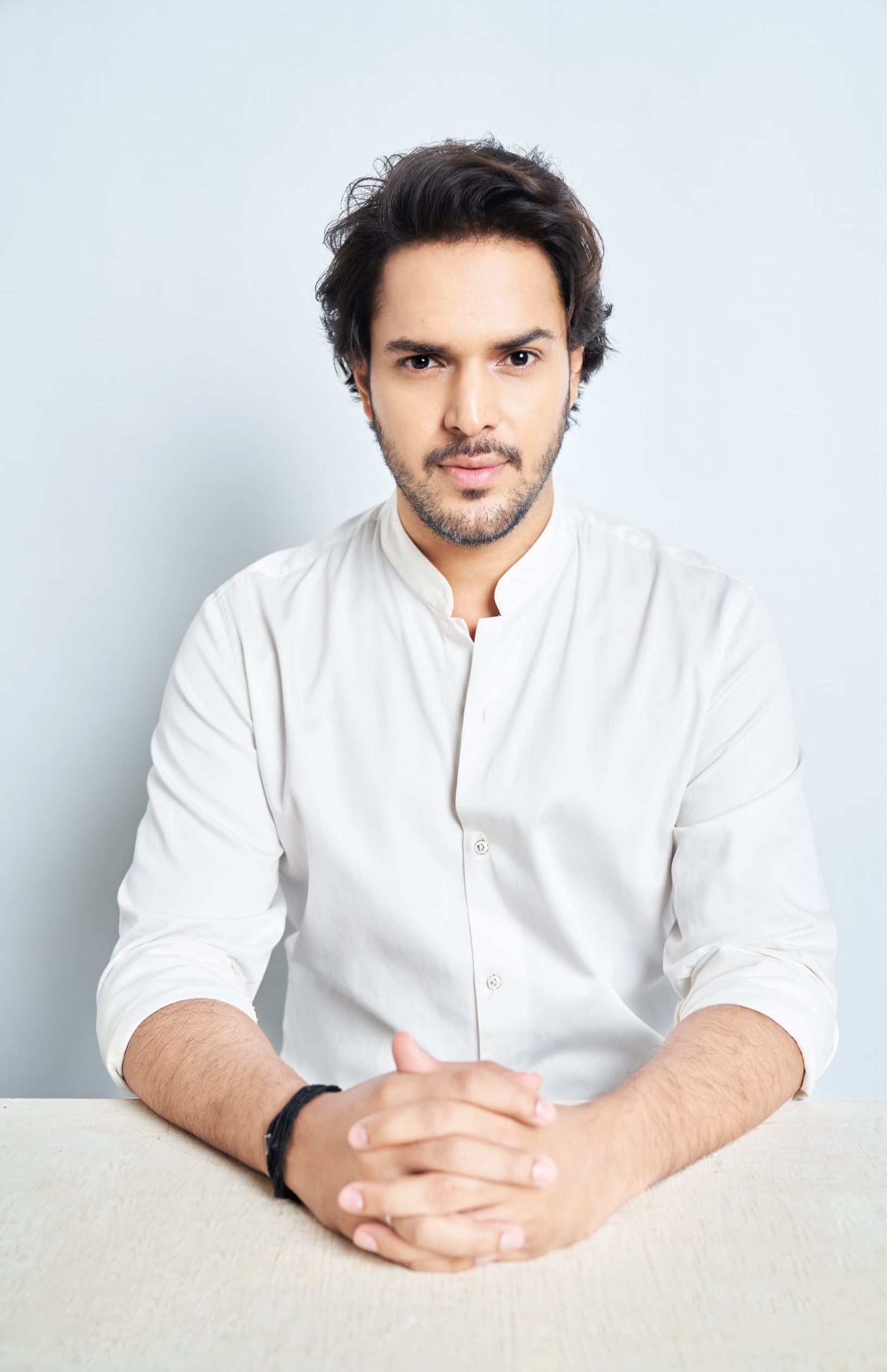

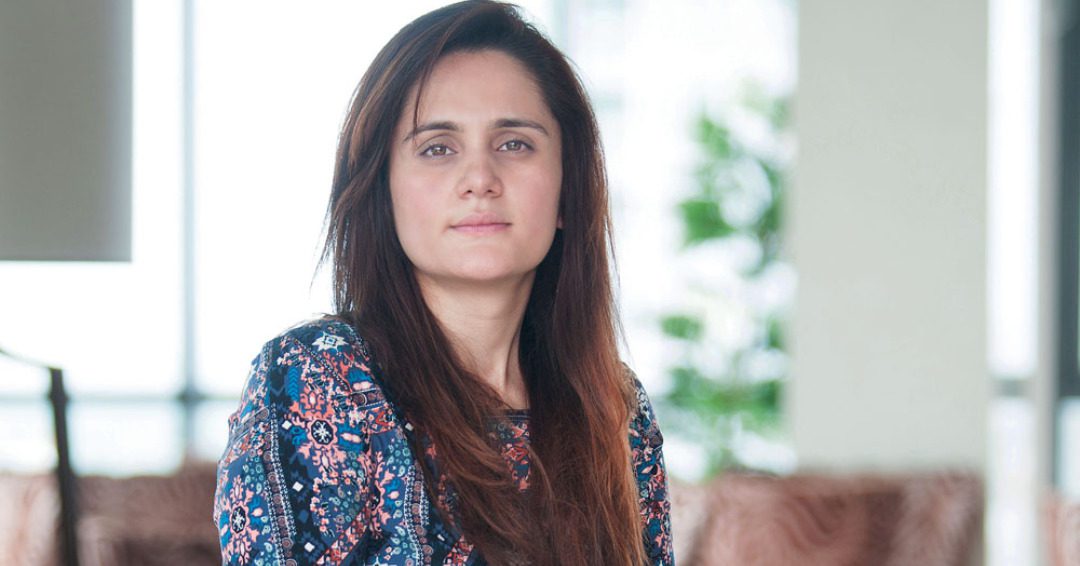


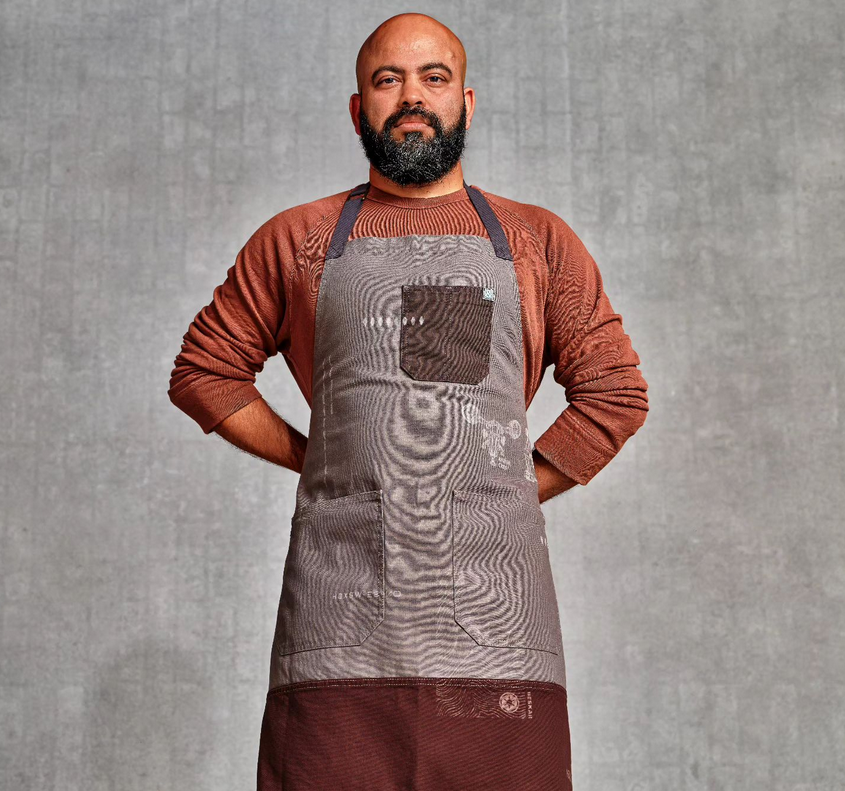 Chef Sujan Sarkar[/caption]
Chef Sujan Sarkar[/caption]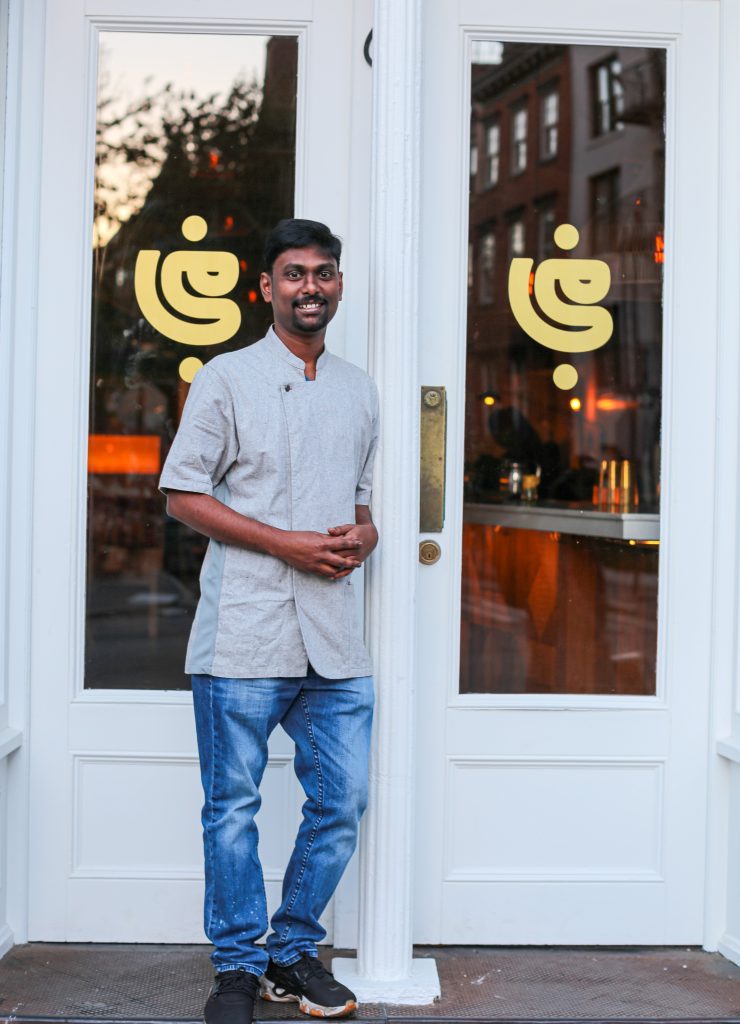
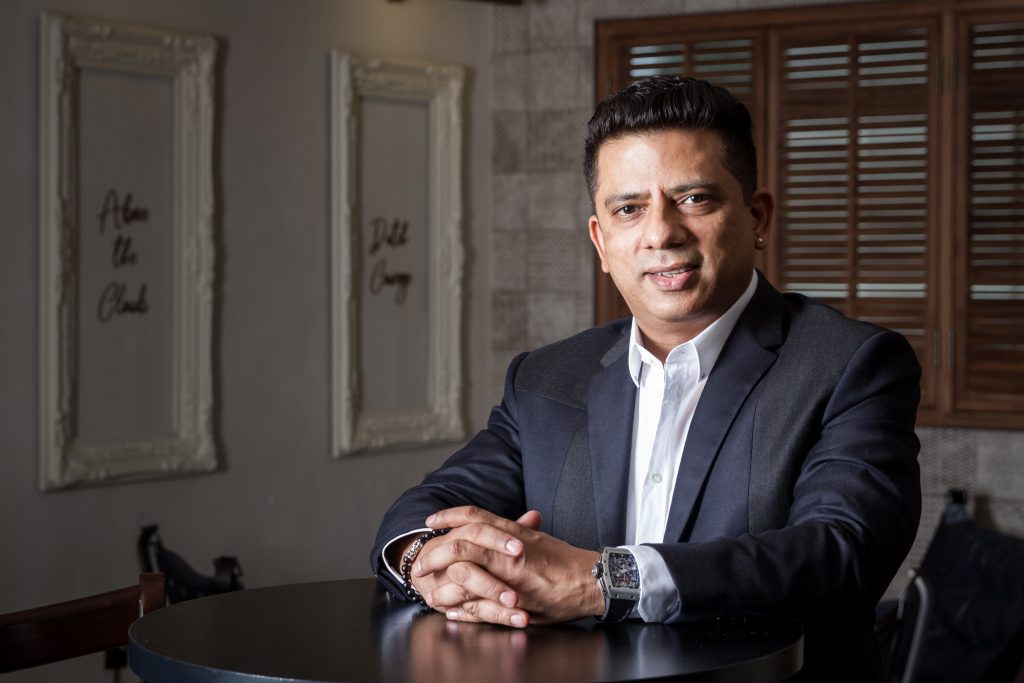 Bhupender Nath, founder Passion F&B, is the brain behind Michelin-starred TresInd, Dubai and TresInd, Mumbai.[/caption]
Bhupender Nath, founder Passion F&B, is the brain behind Michelin-starred TresInd, Dubai and TresInd, Mumbai.[/caption]

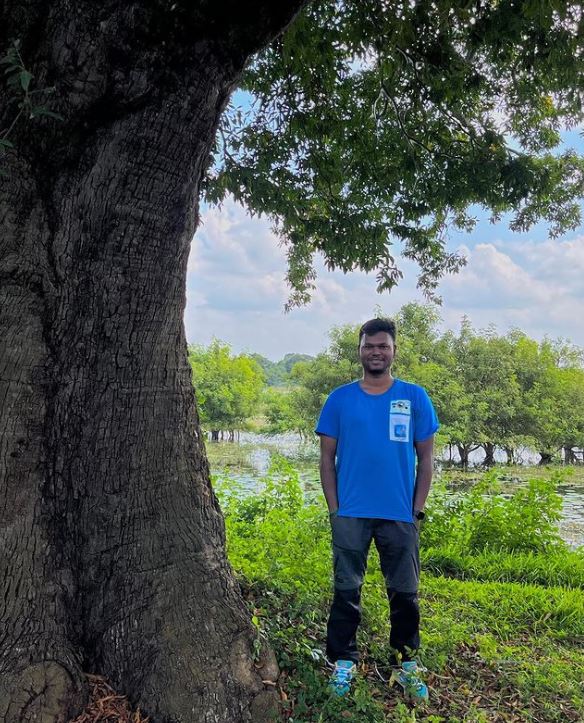 Nimal Raghavan[/caption]
Nimal Raghavan[/caption]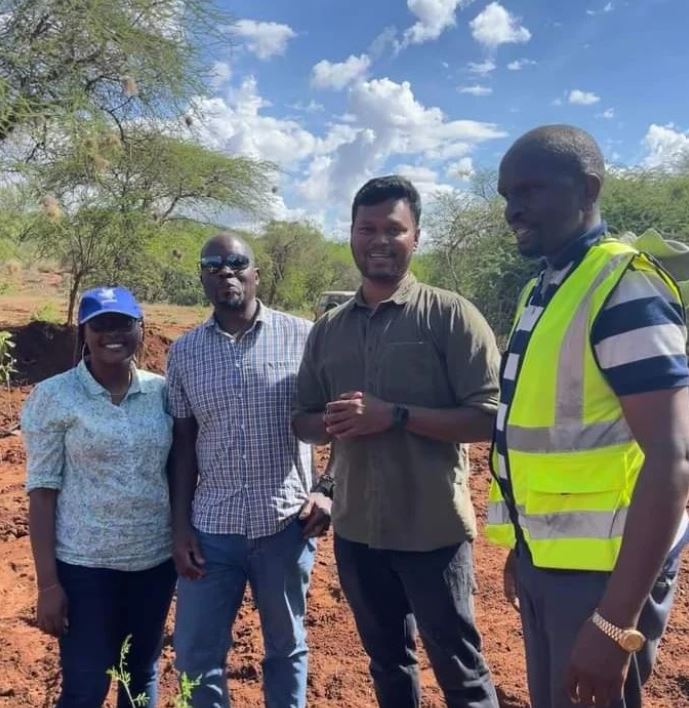 Nimal Raghvan in Kenya[/caption]
Nimal Raghvan in Kenya[/caption]